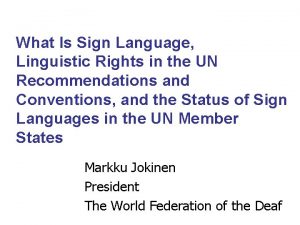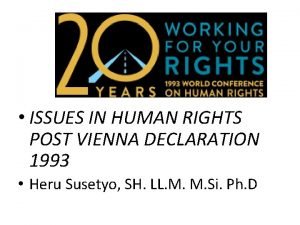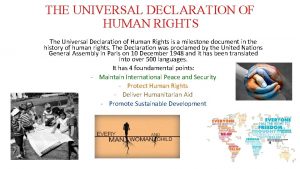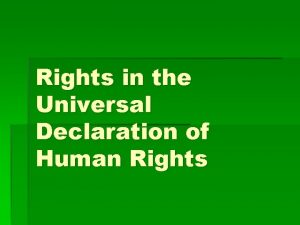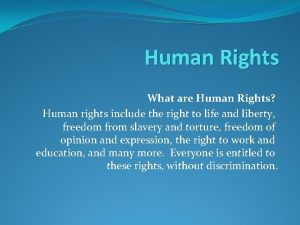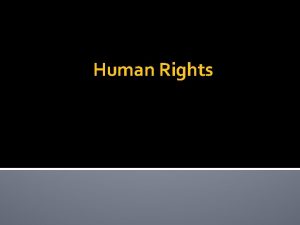Universal Declaration of Human Rights Post WWII Different





- Slides: 5

Universal Declaration of Human Rights • • Post WWII Different regions and cultures created milestone Dream or reality?

Topics in UDHR • • • • Adequate housing Rights of the Child Cultural Rights Persons with Disabilities Education Executions Religions Gender Old Persons Poverty Terrorism Torture Trafficking Water and Sanitation

Current Violations • Tortured or abused in at least 81 countries • Face unfair trials in at least 54 countries • Restricted in their freedom of expression in at least 77 countries

• In Brazil in 2007, according to official figures, police killed at least 1, 260 individuals—the highest total to date. All incidents were officially labeled “acts of resistance” and received little or no investigation. • In Uganda, 1, 500 people die each week in the internally displaced person camps. According to the World Health Organization, 500, 000 have died in these camps. • Vietnamese authorities forced at least 75, 000 drug addicts and prostitutes into 71 overpopulated “rehab” camps, labeling the detainees at “high risk” of contracting HIV/AIDS but providing no treatment.

• In northern Uganda, the LRA (Lord’s Resistance Army) guerrillas have kidnapped 20, 000 children over the past twenty years and forced them into service as soldiers or sexual slaves for the army. • Women’s reproductive rights remain severely curtailed in 2011 under China’s family planning regulations. Administrative sanctions, fines, and forced abortions continue to be imposed, if somewhat erratically, on rural women, including when they become migrant laborers in urban or manufacturing areas, and are increasingly extended to ethnic minority areas such as Tibet and Xinjiang. These policies contribute to an increasing genderimbalance (118. 08 males for every 100 females according to the 2010 census), which in turn fuels trafficking and prostitution.

